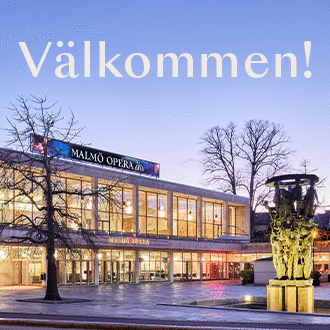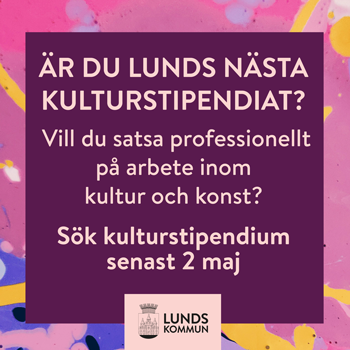The proposals from Sweden’s political parties to combat gang violence offer ”more of the same”. We need to talk about the lucrative drug markets that allow the violence to flourish, according to Simon Sällström from Lund Debate Society.
What should we do to combat the rise of organized crime? The political parties have come up with many suggestions, ranging from harsher punishments to strengthening the Swedish identity and furthering investments in educational reform. However, politicians from left to right consistently fail to focus on the two elements that constitute the foundation of a long-term solution. First, that gang income, recruitment and violence all stem from the lucrative drug market. Any proposal that ignores this is bound to fail to affect meaningful change because the structural incentives are still there. Second, that our best hope to find a solution lies in using the scientific method to the extent this is possible. No longer do we live in a time where the public’s intuition is the best guide to solving complex problems like that of gang criminality.
When asked what the most important thing we can do to end the surging gang violence, not a single party had a proposal that related to the economic drivers of organized crime and gang violence. Some of the proposals are: “more of the same” such as keeping the kids in school, coordinating social services, family and schools. Other proposals are taken straight out of the typical Republican playbook. In other words, more police, longer sentences and stronger witness protection. The former set of proposals has not been popular among voters, as evidenced by the Sweden Democrat’s success in recent polls. The latter set is more of a reaction to crime, after it has happened, rather than means to stop it. Even though these measures have a role to play in combatting organized crime, politicians fail to recognize the root causes that, if addressed, have the greatest potential in attenuating the problems.
A common interpretation of the increased violence in the past years is that organized crime is on the rise generally. Even though this is most likely the case, it is important to note that increased violence is more than anything a symptom of increased competition among criminal gangs. The conflict between criminal groups in Östberga and Bredäng in southern Stockholm has been going on for more than 5 years. This conflict, as many others, started because one of the gangs stole a drug shipment from another in an attempt to increase their market share in the region. So, it’s important to understand that if only one criminal gang dominated in, say Malmö, then it is very likely that we would see significantly fewer shootings.
Drug use in Sweden has risen in the past two decades, which may play a role in the rise of organized crime. In 2017, around nine percent of the population (675 000) had used some form of narcotics. In particular, cannabis use has been on a steady rise the past seven years with around 240 000 people having used cannabis in the past year. One in eleven in the age group 16-29 have used cannabis in the past year. However, we should note that these results are likely to underestimate the extent of drug use, since the numbers are based on self-reported drug use. I may not have numbers on the drug habits of students at Lund University, but I am certain that some students at Lund University are bringing in revenue to the criminal gangs in Malmö. This brings me to the first point: that the drug markets are lucrative.
The potential rewards of engaging in the sale of drugs are huge, while the drawbacks are perceived as negligible. Allow me to hypothesize how a prospective criminal, in lack of better words, would behave. As with most of us, he will suffer from the Dunning-Kruger effect meaning that he will overestimate his own ability to avoid being caught. The positives far outweigh the negatives. A successful career within a gang yields money, power and respect. But gangs cannot recruit and survive without an income. Fundamentally, the weapons they buy and the respect that follows are contingent on money. Remove the money and you’ll remove the attractiveness of joining a gang.
That is why I believe that a complete removal of physical legal tender may be one of the most destructive reforms for organized crime. Normal electronic transactions such as Swish and bank transfers are easily traceable by banks, and by extension, the police. Criminals may then shift to cryptocurrencies, but this has limited potential for two reasons. First, cryptocurrencies have not been widely adopted yet and many consumers will be hesitant to try this new technology. Second, cryptocurrencies are based on blockchain technology which means that all transactions are traceable – limiting the potential of its use for illicit activities. This suggestion is only one of many radical ideas that may or may not be able to halt the proliferation of organized crime in Sweden.
Another way of stopping illicit sales of drugs is to make them legal. As of January 2019, the sale of cannabis for recreational use was legalized in Canada. Currently, the medical use of cannabis is legal in 33 state in the US. Legalizing cannabis in a country such as Sweden has many potential drawbacks as well as benefits. Let me be very clear. I do not propose a legalization. I propose that we conduct rigorous studies that legalize it on an experimental basis so that researchers can assess its impact and we can compare the benefits to the harms. One way of doing that is by allowing Systembolaget, the state-owned company that currently holds monopoly over the sales of alcohol, to sell cannabis in carefully selected locations. If this is done in a controlled manner, then we will be able to properly assess whether or not such a policy is indeed desirable or not.
Ultimately, the quality of the policy response of our politicians depend on the quality of the public debate that guide them. It may be tempting to reject the major political parties in favor of the untested Sweden Democrats. But as for now their only merit is that they have been able to correctly identify that the status quo is failing without presenting a credible solution themselves. None of the parties seem to direct their efforts at the lucrative drug markets, nor are they adopting a scientific approach to this highly complex problem. It is time the Swedish parliament adopt a comprehensive approach directed at the main sources of revenue of the criminal gangs.
Simon Sällström,
member of Lund debate society











